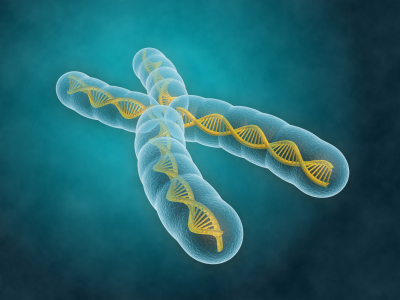Lithium Corrects Circadian Rhythm Abnormalities in Bipolar Depression

At a recent scientific meeting, researcher Monica Federoff described new findings about lithium’s effects in people with bipolar I disorder, especially regarding circadian rhythms. The 12-week study included 386 participants with bipolar I. Some participants responded well to lithium, but even those whose bipolar disorder did not remit saw improvements in total symptoms, depressive symptoms, and manic symptoms.
Only those who were classified as good responders to lithium treatment showed improvement in circadian symptoms. Their depression improved in the direction of more “morningness,” and the authors suggested that “stabilization of circadian symptoms of depression may be an essential feature of lithium’s therapeutic effects in [bipolar] I patients.”
Molecular Biology of Depression
 Dysregulation of the brain in early life can have lasting effects, and the effects of stress and depression can also accumulate. At the 2015 meeting of the Society of Biological Psychiatry, researcher Huda Akil explained that behavioral pathology can “take on a life of its own, leading to deteriorating course of illness and treatment resistance.” She illustrated how preclinical work in animals can help clarify the molecular biology of depression and develop new targets for therapeutics.
Dysregulation of the brain in early life can have lasting effects, and the effects of stress and depression can also accumulate. At the 2015 meeting of the Society of Biological Psychiatry, researcher Huda Akil explained that behavioral pathology can “take on a life of its own, leading to deteriorating course of illness and treatment resistance.” She illustrated how preclinical work in animals can help clarify the molecular biology of depression and develop new targets for therapeutics.
Early Life Experiences are Key
Akil discuss studies of rodents in which she used new molecular genetic techniques to increase the number of glucocorticoid receptors in the hippocampus early in life (prior to weaning). Glucocorticoid receptors mediate the effects of the stress hormone cortisol in people and corticosterone in rodents. More receptors help shut off cortisol secretion after a stressful event. People with post-traumatic stress disorder (PTSD) have high levels of glucocorticoid receptors while people with depression have low levels, leading to over-secretion of cortisol in depression.
The increased glucocorticoid receptors led to a long-term increase in anxiety behaviors and response to stimulants. When Akil carried out the same manipulation on rats that had already been weaned, it had no long-lasting effects, showing that there is a vulnerability window for some long-lasting effects on behavior.
CLOCK Genes and Circadian Rhythms
Akil also studied CLOCK genes in rodents. These genes, including BMAL-1, Per 1, Per 2, and Per3, play a role in circadian rhythms, and their transcription induces these 24-hour cycles. In rodents who were induced into a depression-like state, the CLOCK genes were dysregulated and did not correspond to normal circadian rhythms. These data show that depressive states can induce changes in CLOCK genes and circadian rhythms. Others have shown the converse, that abnormal CLOCK genes can induce behavioral abnormalities including mania-like behaviors.
Fibroblast Growth Factor
Levels of fibroblast growth factor 2 (FGF2) in the hippocampus are low in people with depression. In rodents, FGF2 inhibits anxiety. Decreases in FGF2 are seen in the hippocampus of animals in a depression-like state following repeated defeat by a larger animal. It appears that FGF2 is an endogenous antidepressant (i.e. one that is produced by the brain). When the rodent brain is manipulated to eliminate FGF2, the animals become anxious.
In addition, animals bred to have high stress, low social responsivity, and resistance to new learning also have low FGF2. Treatment with FGF2 reversed these behavioral abnormalities and also increased the production of new neurons. For the stressed rats, receiving FGF2 on their second day of life increased new neuron production, decreased anxiety, decreased proneness to social defeat stress and increased the bonding hormone oxytocin in the amygdala into adulthood.
FGF2 had no effect on rats bred for low stress and high social responsivity, indicating that it only worked for the rats that needed it. Akil compared FGF2 to “personalized medicine for rats.”
Defeat stress affects the way genes are transcribed, and FGF2 was able to reverse one of these specific transcriptional effects, suggesting it could potentially ameliorate some of the long-lasting effects of stress and depression.
The Human Brain
Akil also studied the brains of people who had died of depression, bipolar disorder, or schizophrenia. In bipolar disorder, the nucleus accumbens, the reward center of the brain, was enlarged.
In contrast, Akil described the brains of those people who had died with depression as being “low on fertilizer.” That is, they showed less cell growth, less production of new neurons, more abnormalities in cell shape, and more cell death. Akil said that by the time someone is severely ill, the pathology is all over the brain. The changes Akil saw in the brains of people who were depressed are also consistent with data indicating that several neuroprotective factors, including BDNF and VEG-F, are low in the frontal cortex and the hippocampus of depressed people (while BDNF is high in the nucleus accumbens).
Calcium Channel May Be Responsible for Circadian Rhythm Abnormalities in Bipolar Disorder
Genetic variation in L-type calcium channel genes have been linked to bipolar disorder. Since calcium plays an important role in circadian rhythms, abnormalities in the calcium channel in bipolar disorder could explain some of the circadian rhythm disturbances patients with bipolar disorder exhibit. New research by Michael McCarthy and colleagues shows that calcium channels in general, and the gene CACNA1C in particular, affect signaling pathways that regulate circadian rhythms in both human and animal cells. The researchers also found that calcium channels affected how lithium changes circadian rhythms, suggesting a mechanism by which the treatment may work. They suggest that drugs that affect the L-type calcium channel may be promising treatments for bipolar disorder.
Editor’s Note: The L-type calcium channel blocker nimodipine has had antidepressant, antimanic, and anticycling effects in some patients with bipolar disorder in small studies both by Peggy Pazzaglia and colleagues (including this author Robert Post) and a larger randomized study by Haroon R. Chaudhry.
The clinical effects of nimodipine results thus align with studies linking the CACNA1C gene to bipolar illness and its early onset, increased expression of the gene in the brain of bipolar patients in autopsy studies, increased levels of calcium in white cells of bipolar patients, and a variety of other neurobiological phenomena observed in normal controls carrying the risk gene.
The new link found between CACNA1C and circadian rhythms further links the L-type calcium channel abnormality and bipolar disorder, as well as the therapeutic effects of the L-type calcium channel blocker nimodipine. This drug deserves further study, especially in those with the genetic variation in CACNA1C that has been linked to bipolar disorder.
Atypical Antipsychotic Lurasidone Normalizes a Gene Important in Circadian Rhythms
Disruptions to circadian rhythms are common in mood disorders, leading some researchers to believe that normalizing these daily rhythms may improve the illnesses. Several genes, called CLOCK genes, are implicated in circadian rhythms. In animal studies, researcher Marco Riva and colleagues are examining the expression of CLOCK genes in different brain regions as a result of chronic stress that is meant to produce behaviors resembling human depression.
Male rats were exposed to chronic mild stress for two weeks, and divided into those that were susceptible to stress (identified by their loss of interest in sucrose) and those who were not. Then the rats were randomized to receive either a placebo treatment or 3 mg/kg/day of the atypical antipsychotic lurasidone (trade name Latuda), which has been effective in bipolar depression, during five more weeks of the stress procedure.
The researchers observed the expression of clock genes Clock/Bmal1, Per1, Per2, Cry1, and Cry2. In susceptible rats, the chronic mild stress decreased the clock genes Per1, Per2, and Cry2 in the prefrontal cortex. Lurasidone reversed these CLOCK gene abnormalities and the rats’ depression-like behaviors, which may explain some of the drug’s efficacy in bipolar depression.
Editor’s Note: Lurasidone is also a potent inhibitor of 5HT7 serotonin receptors, an effect that has been linked to antidepressant efficacy. Lurasidone also increases brain-derived neurotrophic factor (BDNF), which is important for learning and memory, and prevents stress from decreasing BDNF. Now it seems that lurasidone’s normalization of CLOCK genes may be another mechanism that explains the drug’s antidepressant effects.
Gene Mutation Induces Bipolar-Like Symptoms
A mutation in a gene related to circadian rhythms may help explain bipolar disorder. Animals with a mutation in the gene, known as CLOCK, typically exhibit behaviors that mimic human mania, such as increased locomotor activity and decreased anxiety.
Stress can lead to depression in bipolar patients, so researcher Nicole Edgar et al. exposed animals with the mutated “manic” version of the CLOCK gene to unpredictable chronic mild stress. The stress brought about decreased locomotor activity and increased anxiety, mimicking a switch into depression. These data suggest that alterations in CLOCK genes may provide a useful model for both mania and depression.
The research was presented at the 2013 meeting of the Society of Biological Psychiatry, and the abstract (#471) can be found in the meeting supplement, Volume 73, Number 9S of the journal Biological Psychiatry.
In another abstract (#472) at the same meeting, researcher Wilbur Williams et al. reported that alterations in related clock genes (that result in decreases in the proteins CRY-1 and SIRT1) are associated with manic-like behavior that could be reversed using lithium. These data further suggest that clock genes may provide a useful model for bipolar disorder.




